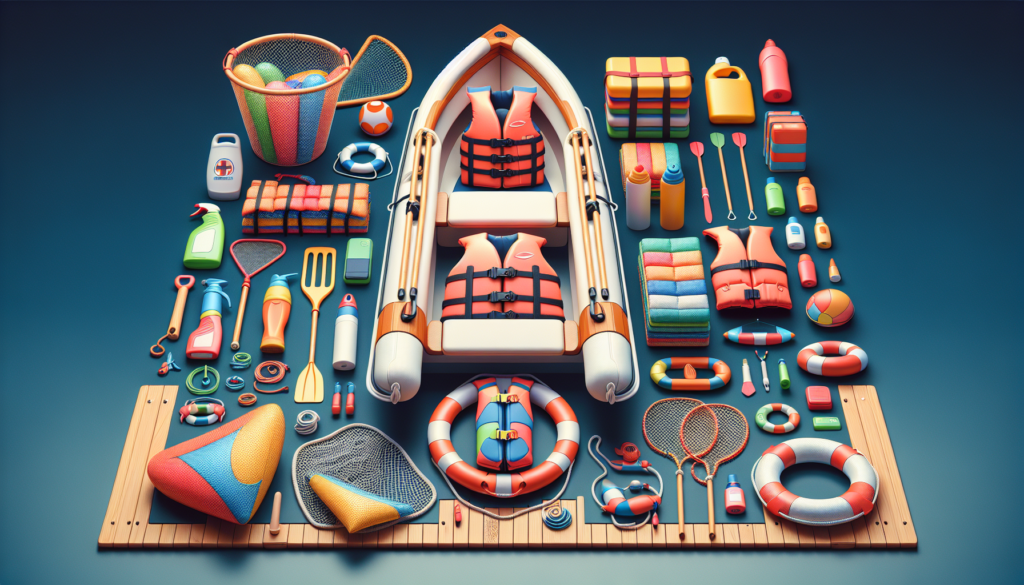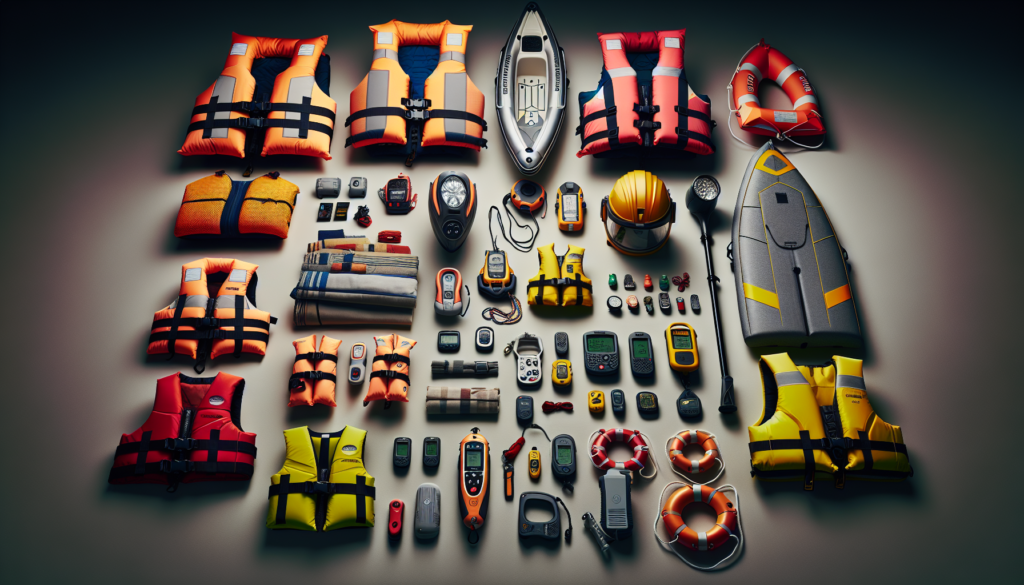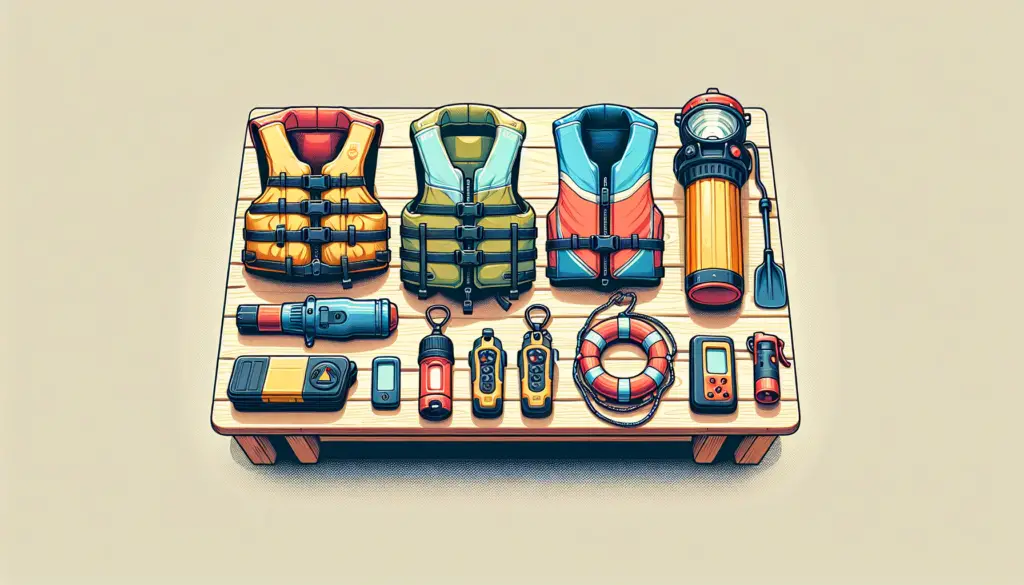The shimmering surface of the ocean sparkles with promise, inviting the boaters to blend in the rhythm of its innocent waves. Yet, under the brilliance lies a hidden nature which is equally firm and unforgiving. To embrace this two-faced beauty with your little ones for a boating adventure, you need to be well equipped. The article will steer your boat through the seas of safety measures, painting a vivid picture of must-have safety equipment for boaters with children. Anchoring on knowledge and geared with guidance, you’ll be able to master the dance of the waves, making your journey more secure and gratifying.

Life Jackets
life jackets are of paramount importance when it comes to the safety of your little sailors. Even the most adept little swimmers can be easily overwhelmed by strong ocean currents or swift moving rivers. Moreover, in an emergency situation or an accident, a life jacket acts as the first line of defense, offering invaluable buoyancy that can keep your children afloat till help arrives.
Importance of lifejackets for children
Every individual on board a vessel should possess a lifejacket, but their importance multiplies exponentially when it comes to children. Children, especially those with little to no swimming skills, heavily depend on life jackets. A life jacket not only ensures that your child remains afloat but can also provide essential visibility in the water due to their bright colors.
Choosing the right size and fit of lifejackets
As important as equipping yourself and your children with life jackets is, it’s equally crucial that they fit perfectly. For children, the jacket should be snug with a snugly fastened upper strap and buckle around the waist. Helmets with adjustable straps are more preferred as they grow with your child, providing them comfort without compromising on their safety.
Attaching and removing lifejackets properly
It is imperative to teach your children how to put on and remove their life jackets correctly. An improperly fastened lifejacket can be as hazardous as not wearing one at all. Familiarize your child with the process and ensure they are comfortable before ever setting foot on a boat.
Child Safety Harness
A child safety harness can provide an additional layer of protection, especially on boats where the risk of a child falling overboard is present.
Definition and use of child safety harness
A child safety harness is essentially a belt or a strap that securely fastens your child. It restricts their movement within a safe area, preventing them from straying too far on the boat, thereby reducing the risk of accidents.
How to select the correct type of harness
While selecting a safety harness, focus on aspects such as its strength, durability, and ease of use. It should have sturdy fasteners, and strong, weather-resistant material. Also, ensure it’s comfortable for your child to avoid any discomfort or reluctance to use it.
Practical tips on using a safety harness
Educate your child on why and how to use the safety harness. Like most safety equipment, they work best when your child understands and cooperates in using them.

Guardrails and Netting
Guardrails are installed at the edges of boats to prevent an accidental fall overboard. Netting offers an additional layer of safety, especially for smaller children.
Using guardrails to prevent falling overboard
Guardrails are designed to serve as a physical barrier that prevents individuals from inadvertently going overboard. They are extremely necessary for children who are naturally curious and likely to wander around.
Implementation of netting as an extra safety measure
Netting, often installed alongside guardrails, serves as an extra blockade, preventing children or any loose objects from slipping underneath the guardrails. They are essentially an additional safety measure to guardrails.
Maintenance and checks of guardrails and netting
Your safety measures are only as good as their condition. Hence, regularly inspect your guardrails and netting for any signs of wear or damage. Replace or repair them immediately if required.
First Aid Kit
Accidents are unpredictable and can happen at anytime. A well-stocked first aid kit is a must-have on any boating adventure.
Necessity of a comprehensive first aid kit
A first aid kit is your primary tool when dealing with minor injuries or stabilizing a person till professional help arrives. It equips you to handle various injuries such as cuts, burns, stings, or any other medical emergencies.
Essential items in a boat first aid kit
Stock your kit with items such as bandages, antiseptic wipes, scissors, tweezers, medical tape, and a range of medications from painkillers to anti-allergens. Refresh the contents of your kit periodically and make sure all medicines are well within their expiry dates.
Training children on the use of a first aid kit
It’s valuable for children to learn basic first aid skills, both for their safety as well as others. Teach your child how to use basic items in the kit and educate them on fundamental first aid procedures.

Fire Extinguisher
Fire is a potential hazard in any environment, but its risk and aftermath multiply when you’re out at sea.
Understanding the relevance of fire extinguishers
Having a fire extinguisher onboard is crucial to control minor fires before they escalate into unstoppable infernos. They are not only a legal requirement on many vessels but are also a prudent safety measure.
Teaching children about fire safety
Educate your children about the hazards of a fire on a boat and the need to act quickly yet calmly. While younger children should be taught to alert adults, older children can be shown how to use extinguishers under adult supervision.
Maintaining and inspecting the fire extinguisher
Regular inspection of your fire extinguisher is critical. Check the pressure and visual condition, ensuring that it is fully charged and operational at all times.
Emergency Signaling Devices
In the vast expanse of water, being able to signal for help could be a lifesaving act.
Importance of emergency signaling devices
These devices are a call for help when things go south. They allow you to send visual or auditory signals for assistance in case of emergencies.
Types of signaling devices: flags, flares, and horns
Signaling devices can be anything: colored flags, loud horns, handheld flares or even smoke signals. Each of these serves a different purpose and helps grab attention from a substantial distance.
Educating children about emergency signaling procedures
Children should also be informed about the importance of these devices and when to use them. It’s a good practice to teach them how to use a flag or a horn to signal for help.

Safety Ladders
Safety ladders are crucial for getting back onto the boat in case someone does fall overboard.
Purpose of safety ladders on boats
Apart from ease of boarding, these ladders can be crucial during the unfortunate event of a ‘man overboard‘ situation. They provide a safe and quick way to get back onto the deck.
Operating safety ladders effectively
It’s important that the ladder is securely fastened and is in proper working condition. Familiarize your child with the process of unfolding and climbing the ladder correctly.
Safety precautions when using ladders
Safety should never be compromised when using ladders. Ensure your child always has a firm grip, uses both hands while climbing, and never jumps or rushes.
Life Ring or Buoy
Life rings or buoys are integral to overboard recovery.
Basic understanding of life ring or buoy
A life ring or buoy is a lifesaving buoy designed to be thrown to a person in the water to provide buoyancy and prevent drowning.
Using a life ring in case of a person overboard
Teach your children how to use a life buoy – where it’s stored, and how to throw it to reach a person overboard. They should understand it’s not a toy, but a crucial piece of safety equipment.
Life ring maintenance and checks
Keep life rings in an easily accessible area and ensure they are in good condition. Do not let them fade or lose their buoyancy.
Carbon Monoxide Detector
During a boating trip, the threat of carbon monoxide poisoning is just as real as it is on land.
The threat of carbon monoxide poisoning on boats
Combustible engines create carbon monoxide, an invisible, odorless gas that can be fatal if inhaled over a period of time. As such, boats often need detectors to alert occupants, particularly when the engine is running.
Installing and maintaining a CO2 detector
Install detectors in sleeping areas and in common areas where gas leaks might occur. Regularly validate their functionality and replace batteries as recommended by the manufacturer.
Procedures if carbon monoxide is detected
Have an evacuation plan in place if carbon monoxide is detected. Train your children to evacuate as soon as the alarm sounds, and not to re-enter until the area is cleared.
Navigation Lights
Understanding the function and importance of navigation lights is crucial when you’re out on the water.
Function of navigation lights at sea
These lights serve a two-fold purpose – they illuminate your boat in the dark for others to see, and help you ascertain the direction, speed, and size of other vessels.
Regular checks and maintenance of lights
Consistent checks and maintenance of your boat’s navigation lights is crucial. Ensure they’re in proper working condition before you start your trip, and take spare bulbs or LEDs along in case of any unforeseen failures.
Teaching children about night-time safety precautions
Educate your children about the use of navigation lights and the importance of being extra cautious during night time when visibility is reduced. Emphasize the rules of night-time sailing and teach them how to identify and interpret the meaning of various lights on other vessels.

